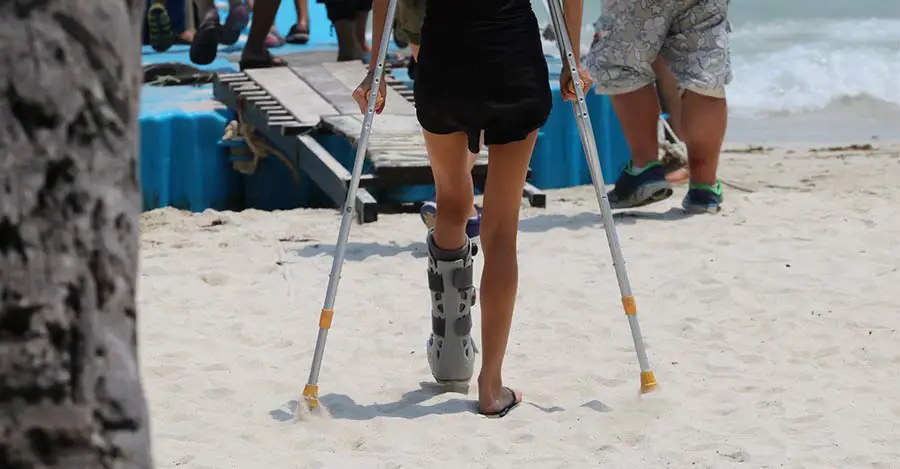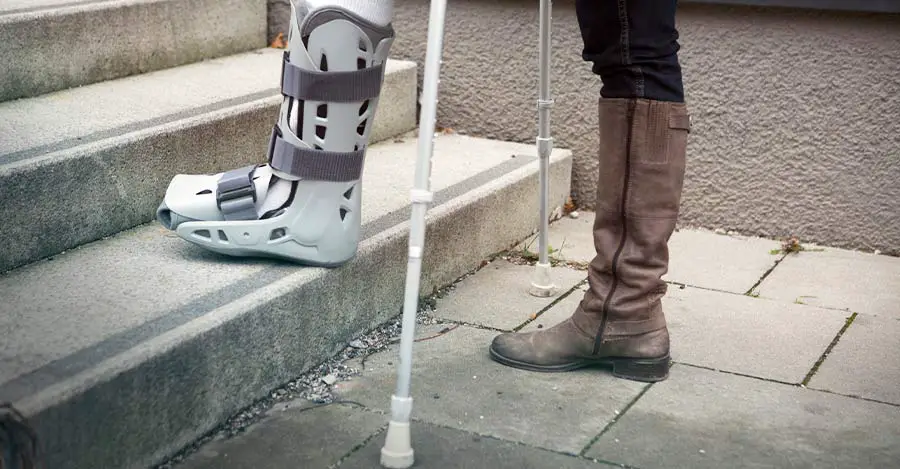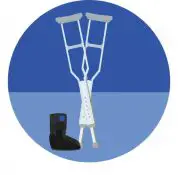Tips For Wearing A Walking Boot
- Last Update:
Dealing with an injured foot or ankle can be frustrating. But it’s important to gather all the information you need to make the recovery process as smooth as possible. A walking boot, also sometimes called a moon boot or cam boot, can be one option to help those suffering from a foot or ankle injury heal.
There are many types of walking boots available and they come in different colors, designs, and sizes. Your doctor can help you determine which one suits your needs best. Despite how bulky they might seem, walking boots are an important part of your recovery period.
Although there’s a lot of information out there on for wearing a medical boot, not all of them may be relevant to your situation. That’s why we have taken time to scour medical sites and other research avenues to find tips suitable for all situations.
Follow Your Doctor's Advice

The most important tip we can give you is to follow your doctor’s advice. You can trust that your doctor has your best interests at heart. He or she will guide you and help you learn about your injury and whether or not you’ll ned a walking boot in the first place. In the case where you do need a one, a doctor can also tell you how to wear and walk with a boot to ensure your injury heals properly.
When speaking with your doctor about the walking boot you need to wear, don’t be afraid of asking questions like what you can and cannot do. You should also ask your doctor about the activities you can and cannot do with a walking boot and how long you should wear one. Here are a list of questions you may want to ask your doctor about walking boots
- What’s the purpose of the boot in my recovery?
- How should I clean and care for the boot to prevent infections?
- Are there any specific exercises or stretches I should do while wearing it?
- Will I need any additional assistive devices, like crutches, while using the boot?
- Are there any warning signs I should watch out for while wearing the boot, like increased pain or discomfort?
- Can I shower or bathe with it on, or do I need to take it off?
- What type of shoes can I wear with the walking boot? Are there any restrictions?
- Will I need a different size as my swelling decreases and my foot heals?
- How can I manage pain and discomfort while wearing the boot?
- Can I remove the boot for short periods, or should I keep it on all the time?
Remember that your doctor is the best source of information for your specific situation so its important to follow your doctor’s instructions closely. After all, you don’t want to risk re-injuring yourself or suffering through a longer healing period.
Choose The Right Fit Walking Boot
Sand on beaches differ, some beaches have it hard and easy to talk on, while others have it soft and loose. For this reason, it might not be a bad idea to ask about the sand condition on the beach you are visiting. Having a prior idea about the surface that you’ll be walking on could prepare you for the challenge.
Hard-packed sand might not be as challenging and tiring in comparison to a soft flabby one. Soft sand tends to sink with each step you take with your crutches, requiring more effort for you to pull. Your crutch tips might get deep inside that can cause you to fall if not careful.
Ask a friend about the beach you are going to visit and the type of terrain it has. you can also choose one that you already know to be covered with hard sand.
- Choose a boot that is the right size.
- Choose a boot that isn’t too heavy.
- Choose a boot that can be easily put on and taken off.
- Choose a boot that can be tightened or loosened easily in case your foot swells.
- Choose a boot that has a comfortable interior.
- Choose a boot that you can wear for hours at a time without it feeling uncomfortable.
- Choose a boot with room but not too much room to avoid chafing and blistering.
Keep Walking Boots Dry

Remember that you must not wear a wet walking boot. If you’re recovering from an injury or surgery and wear a wet boot, you’re exposing yourself to potential bacteria and fungi infections. This is because when the inside of a walking boot is wet, it can become molded and mildewed.
In addition, a wet boot can also slow you down and make your foot heavier to move. This will often make it more likely for you to become injured.
Besides avoiding using a walking boot in the rain or walking into puddles, you should also take care when putting it on. When you’ve left the shower, dry off your foot properly. This will ensure you don’t put any water into your boot.
You should also try to wear thick socks with your walking boot. Thick socks will capture sweat and ensure it doesn’t create a wet environment inside your boot.
Wear A Sock Liner
If you’re an outdoor enthusiast who doesn’t want their foot or ankle injury to keep them home-bound, you should use a sock liner. When you use a sock liner, you add extra cushion between your injured appendage and the ground.
This extra cushioning will ensure you are in less pain and discomfort even if you walk with your walking boot on all day. You can use many different sock liners, but choosing one that fits your boot and conforms to your foot is best. Without proper arch support, you could cause yourself unnecessary pain.
Ensure Your Shoe Balances With Your Walking Boot
If the shoe on your uninjured foot isn’t properly balanced, you could feel pain when walking. This is because you will constantly put more weight on the foot in the walking boot.
Luckily to fix this problem, you can use a shoe balance. With a show balance, you can add the appropriate level of height to your shoe to match your boot. Doing this will balance the weight on both feet and ensure you don’t hurt your injured foot or ankle.
Use A Crutch Or Cane To Reduce The Weight

Using a crutch or cane might not be convenient, but using one of these aids with a walking boot is often safer. Using a crutch or cane, you might not have to wear a more high-heeled shoe on your non-affected foot.
A crutch or cane can also help keep the added weight pressure off the foot when using a walking boot. There are countless crutches and canes available; you just need to choose one that suits your injury. It should also be sturdy and safe enough to keep your foot from becoming more injured.
Shorten Your Stride
Since walking boots have a ‘rocker’ bottom, they can be harder to walk with, especially long distances.
That means that to walk comfortably while wearing one, you need to shorten your stride. Shortening your stride and stepping a shorter distance with each foot will prevent your foot from hurting or straining in your walking boot.
Keep Your Feet And Your Knees Straight
Since the weight and shape of a walking boot will make you want to turn your foot outwards as you walk, you need to stop this. If you don’t, you could hurt your foot and leg and strain other muscles by walking the wrong way.
The easiest way to ensure you continue walking normally with a boot is to ensure your feet and knees stay straight ahead.
More Rest And Less Walking
Even though you are allowed to walk with a walking boot, it’s usually best to still try to get as much rest as you can. This means that you shouldn’t tire yourself out walking too much. This is especially true if you’re dealing with an injury like an ankle fracture, or a foot or ankle sprain.
Walking excessively will put strain on your healing foot or ankle and could lead to further injury.
Final Word
By keeping these handy walking boot tips in mind, you will significantly reduce your chances of having any problems while wearing one. These tips are easy to remember and simple to do, so consider them if you have an injury.
With these tips in mind and a cam boot on your foot, you should avoid additional injury and comfortably recover.
